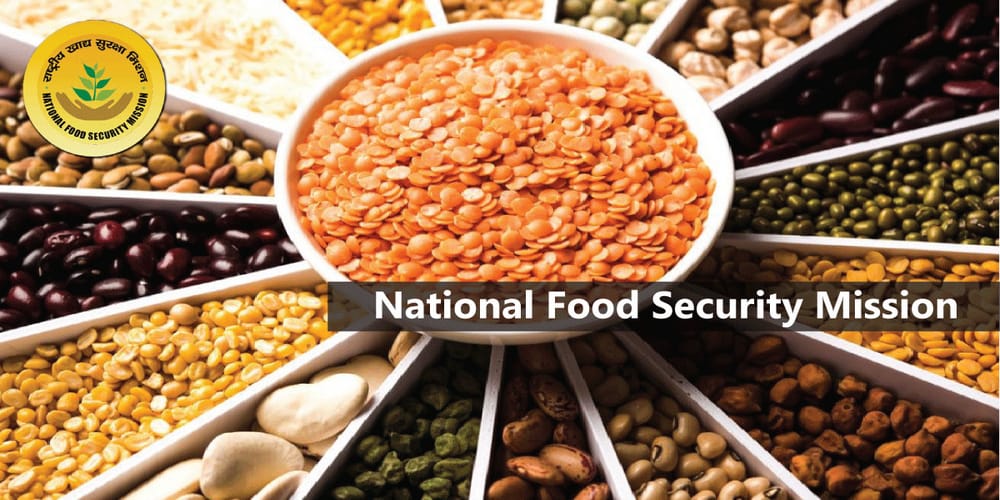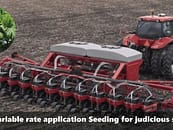National Food Security Mission (NFSM) was launched in 2007-08 by the Government of India as a centrally sponsored scheme. The primary objective of NFSM is to increase the production of rice, wheat and pulses through holistic planning including expansion of cultivation area, restoration of soil fertility, and technology integration. The NFSM has a presence at the National, State, District and village level. The NFSM aimed at enhancing the production of rice, wheat and pulses by 10, 8 and 2 million tons respectively by the year 2011. The mission is being continued with a new additional target of 13 million tons of food grains from 2017-18 to 2019-20. NFSM is being executed in identified districts of 29 states in the country.
Under the NFSM, government bodies at different levels ranging from centre to the gram panchayat would be involved to intervene in the ways to maximize farm output. These interventions are in the form of on field demonstrations of new crop varieties, distribution of seeds and other inputs under subsidy schemes, assistance for farm machineries like drum seeders, sprinklers etc. States are also provided financial assistance as per the needs in areas like irrigation facilities, development of godowns, machines for post-harvest processing, etc. with an objective to ensure maximum output.
According to NFSM report, the total financial implications for the NFSM were to be Rs. 4,882.48 crore during the 11th Plan (2007-08 2011-12). Initially the NFSM was launched under three components i.e. National Food Security Mission – Rice (NFSM-Rice); National Food Security Mission – Wheat (NFSM-Wheat); and National Food Security Mission – Pulses (NFSM Pulses). NFSM later proposed to cover coarse cereals and fodder crops during the 12th plan period (2012-17).
Apart from that, in the 12th plan, the cropping system is designed to accommodate cash crops as well. This would be achieved by crop rotation through combinations like cotton-wheat, cotton-mustard, jute-rice-potato, bajra-sugarcane-ratoon-wheat, etc. Technological supports like online pest monitoring and remote advisory services are also being integrated in the mainstream practices under NFSM.
Major Components of NFSM
- National Food Security Mission – Rice (NFSM-Rice)
- National Food Security Mission – Wheat (NFSM-Wheat)
- National Food Security Mission – Pulses (NFSM-Pulses)
- National food Security Mission – Coarse cereals (NFSM-Coarse cereals)
- National Food Security Mission – Nutri cereals (NFSM- Nutri cereals)
- National Food Security Mission – Commercial crops (NFSM-Commercial crops)
- National Food Security Mission – Oilseeds and Oilpalm (NFSM-Oilseeds)
- National Food Security Mission – Seed village programme
FocusAgritech’s Outlook
The concerned bodies are dedicated to finding the most technologically advanced farming methods supported by quality input. These research outputs are made available to the grassroots level through farmer field demonstration (FFD) with visible differences in the results vis-a-vis traditional approach. Newer and more sustainable techniques like SRI (System of rice intensification) are being promoted among the farmers. With the far reaching effect of this mission, it’s the best way for agri-tech companies to collaborate with government bodies to integrate the best in class technologies with traditional practices.
Keywords: NFSM, FFD, SRI, cash crops, crop rotation
Recent Article
Site Specific Crop Management for Precision Agriculture







